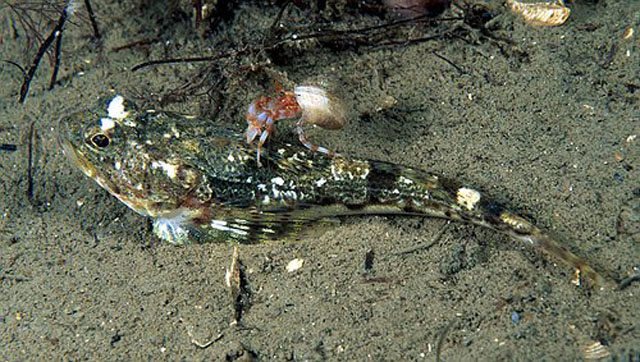| Cottidae (Sculpins) |
| 15.7 cm SL (male/unsexed) |
|
demersal; marine; depth range 0 - 930 m |
| Western Atlantic: Canadian Arctic to Hudson and Ungava bays and Newfoundland in Canada. Eastern Atlantic: Greenland, Iceland, Jan Mayen, Spitzbergen, Barents and Kara seas, Bohuslän in Norway (Ref. 4926). Reported from the Alaskan Beaufort Sea (Ref. 28503). |
|
Dorsal spines (total): 7-10; Dorsal soft rays (total): 17-23; Anal spines: 0-0; Anal soft rays: 12-17. Yellowish with brown spots, most numerous on back; narrow stripes on soft dorsal, pectoral and caudal fins, with dark spots on fin rays (Ref. 4698). Head height equal to head width. Males with a long pointed genital papilla (Ref. 35388). |
| Found on muddy, sandy or rocky bottoms or among algae (Ref. 4698). Maximum depth at 930 m (Ref. 58426). Benthic (Ref. 58426). Feeds on benthic polychaetes, crustaceans (Hyppolyte, Boreophausia), and large hyperiids (Phascolosoma) (Ref. 4698). Males usually below 7 cm and females below 12 cm. Lives at temperatures -1.7-10°C. Female lays 150-1,000 eggs with a diameter of 3mm (Ref. 35388). |
|
Not Evaluated (N.E.) Ref. (130435)
|
| harmless |
Source and more info: www.fishbase.org. For personal, classroom, and other internal use only. Not for publication.
